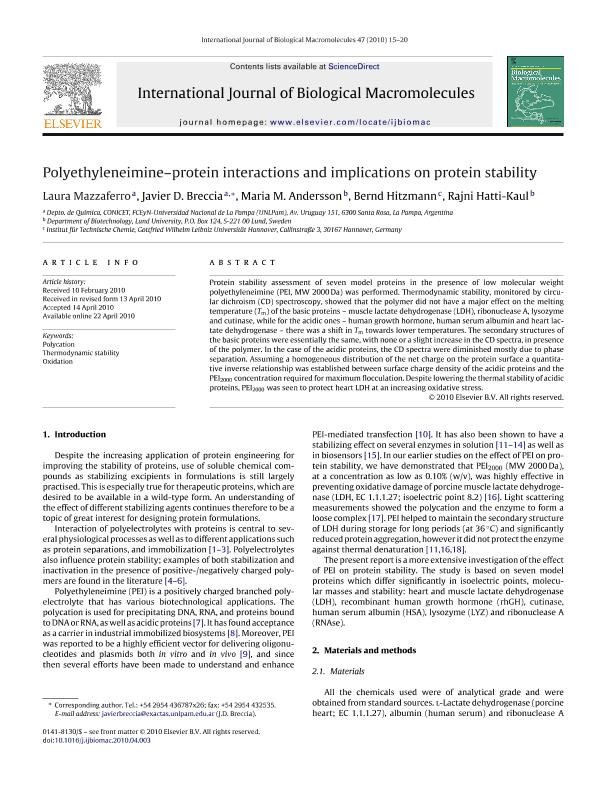Artículo
Polyethyleneimine-protein interactions and implications on protein stability
Fecha de publicación:
07/2010
Editorial:
Elsevier Science
Revista:
International Journal of Biological Macromolecules
ISSN:
0141-8130
Idioma:
Inglés
Tipo de recurso:
Artículo publicado
Clasificación temática:
Resumen
Protein stability assessment of seven model proteins in the presence of low molecular weight polyethyleneimine (PEI, MW 2000Da) was performed. Thermodynamic stability, monitored by circular dichroism (CD) spectroscopy, showed that the polymer did not have a major effect on the melting temperature (T m ) of the basic proteins - muscle lactate dehydrogenase (LDH), ribonuclease A, lysozyme and cutinase, while for the acidic ones - human growth hormone, human serum albumin and heart lactate dehydrogenase - there was a shift in T m towards lower temperatures. The secondary structures of the basic proteins were essentially the same, with none or a slight increase in the CD spectra, in presence of the polymer. In the case of the acidic proteins, the CD spectra were diminished mostly due to phase separation. Assuming a homogeneous distribution of the net charge on the protein surface a quantitative inverse relationship was established between surface charge density of the acidic proteins and the PEI 2000 concentration required for maximum flocculation. Despite lowering the thermal stability of acidic proteins, PEI 2000 was seen to protect heart LDH at an increasing oxidative stress.
Palabras clave:
Oxidation
,
Polycation
,
Thermodynamic Stability
Archivos asociados
Licencia
Identificadores
Colecciones
Articulos(INCITAP)
Articulos de INST.D/CS D/L/TIERRA Y AMBIENTALES D/L/PAMPA
Articulos de INST.D/CS D/L/TIERRA Y AMBIENTALES D/L/PAMPA
Citación
Mazzaferro, Laura; Breccia, Javier Dario; Andersson, Maria M.; Hitzmann, Bernd; Hatti Kaul, Rajni; Polyethyleneimine-protein interactions and implications on protein stability; Elsevier Science; International Journal of Biological Macromolecules; 47; 1; 7-2010; 15-20
Compartir
Altmétricas




